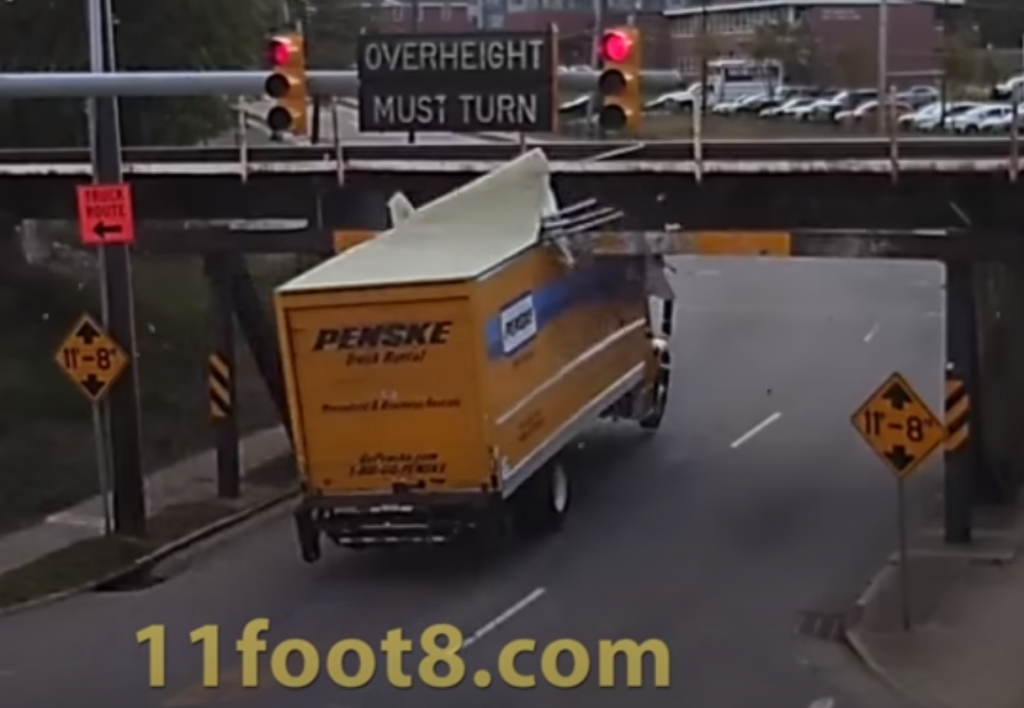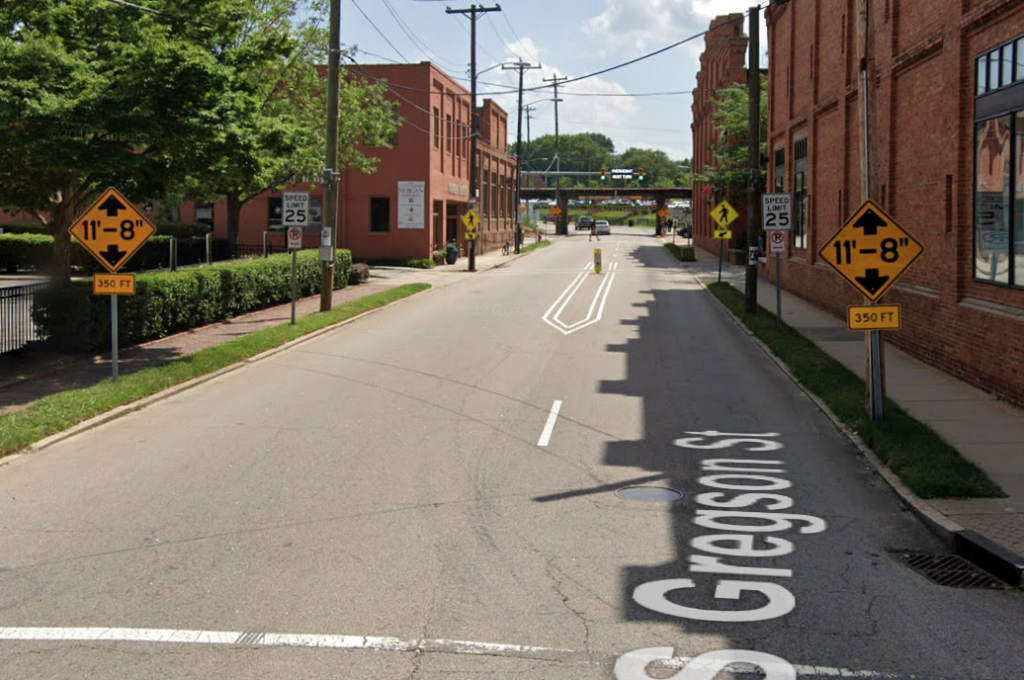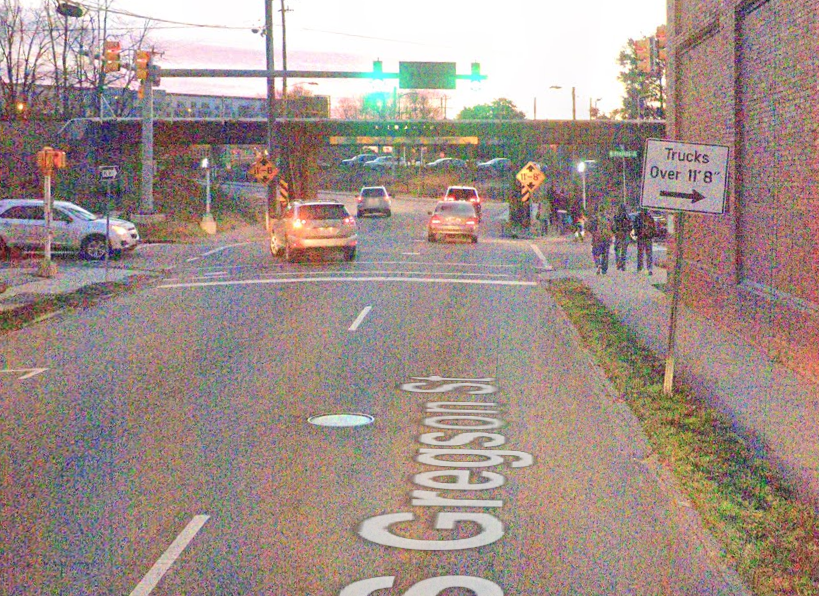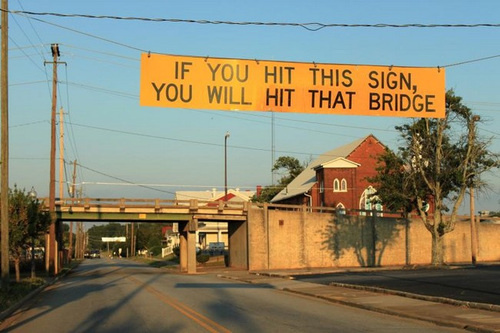Besides being a great source of schadenfreude, Jürgen Henn’s website, 11foot8.com offers some great insight in the difficulty of effective mistake-proofing.
Background
The clearance between the road and the railroad bridge at 201 Gregson Street in Durham, North Carolina is officially 11 feet 8 inches (3.55 meters).
A typical rental box truck is about 12 feet high (3.65 meters).
The result:

The more astute of you may have noticed the “OVERHEIGHT MUST TURN” sign just above the smashed truck.
Well before the truck approaches the intersection, it passes under a height sensor. If the vehicle is overheight, the OVERHEIGHT MUST TURN sign comes on and starts to flash, and the traffic lights turn red.
While this effort did mitigate the problem, obviously there are drivers who simply do not notice. Lots of them. Jürgen has cameras trained on the intersection and captures over a dozen crashes in a typical year. As a result, his website has attracted international attention. See the short documentary here: http://11foot8.com/about/the-documentary/
Familiar Tasks = “In the Zone”
The human brain is an amazing thing. It also works by deceiving us. It creates the illusion of complete awareness of the things around us when, in reality, we are simply aware of a model our brains have constructed of what we perceive to be there.
It is also an amazing engine at engaging actions based on pattern matching. For example –
In sessions I facilitate, I routinely ask people if they can recall a time when they arrived home after work but realized they didn’t remember driving the route. Nearly every hand in the room goes up. That is pretty amazing because driving is an incredibly complex task. But, assuming you get a license in your mid-teens, by the time you are in your early 20s, most people don’t give it much thought. (There is a reason your insurance rates drop when you turn 25.)
It has become a hard-wired neural pattern, a series of habits, a programmed set of responses that are operating below below the conscious and deliberate thinking part of the brain. This is really good because this process is much faster and more responsive than the alternative. Think about how it felt to be driving when you were just learning – or how it feels to be doing anything new when you are just learning.
The downside to this amazing programming is that things that don’t jar us into consciousness often go unnoticed.
And the more familiar, the more expert, we are with the task at hand, the more likely this will happen.
Levels of Mistake Proofing
I like to talk about three levels of mistake-proofing. Four actually, if you count Zero as a level.
- Level 0 – the task must be performed correctly from memory.
- Level 1 – there is a discrete task of checking build into the job.
- Level 2 – there is an active indication when a mistake is about to be made (or has just been made and there is still time to correct without consequences).
- Level 3 – there is active prevention that gets in the way of making the mistake.
The OVERHEIGHT MUST TURN sign is a Level 2. The driver has already passed signs informing him of the bridge clearance about 100m before the bridge.
The height sensors are on the poles just past the speed limit signs.

Then in the next block, there is another sign telling the driver to turn:

And finally the light changes and the OVERHEIGHT MUST TURN sign illuminates.
And still they miss it.
(Direct YouTube link for the email readers: https://youtu.be/I0BJmC6u7MU)
To be clear, the vast majority of truck drivers don’t hit the bridge. But over a dozen a year do. (There were more before the flashing sign was put in.)
“Pay Attention!” = Fundamental Attribution Error
As we watch Jürgen’s videos it is easy to assign character attributes to the drivers who hit the bridge. If only they were better drivers. (The vast majority people who are asked to rate their driving skill will say they are “above average” by the way. Think about that.)
But it is human nature to get lulled into a bit of complacency when engaging a routine task- and driving is a routine task in spite of the complexity.
Now – think about the people in your organization. How many opportunities to they have to make a mistake every day… every hour… in the course of their work? How many of those possible mistakes have serious or expensive consequences?
They are experts at what they do. And they don’t make many mistakes. And they usually catch themselves before there is a problem. But the Law of Large Numbers says “Given enough opportunities, the unlikely is inevitable.”
Can anyone reading this honestly say they have never inadvertently run a stop sign? Yet accidents rarely occur. Now and then there is some panic braking, and rarely there is a collision.
Yet it is really easy to single out the person who:
Performs the work the same way, in the same conditions as everyone else.
Makes the same mistakes, just as often, as everyone else.
Just like everyone else, usually they are caught in time, or other conditions aren’t present for a bad outcome.
But this time everything lined up and BANG – the defective product got missed, or the leak wasn’t noticed before the sump went dry.
Then that person gets singled out for “not following procedure” when nobody follows procedure.
Job Instruction “Key Points” = Opportunity
In a Job Breakdown for TWI Job Instruction we assign a “Key Point” as something the learner must remember specifically because it:
- Might result in a hazard – injure the worker or someone else.
- “Make or break the job” – if something isn’t done a specific way, the task fails.
- Is a “knack” or technique that makes it easier to do.
Those first two are red flags. You are asking your team member to memorize critical to safety and critical to quality tasks. My challenge: How many of those key points can you “mistake proof” out of the job breakdown?
Finally – rather than the sensors and flashing lit signs, there is this approach from “somewhere on the Internet.”

That is awesome because even if the driver doesn’t see the sign, the BANG! may get his attention in time for it to register and stop. In the Durham, NC example above, apparently this wouldn’t work because there are legitimate reasons for trucks to come down the street up to the intersection just before the bridge. After that, it is really too late unless the driver is already aware that he has to turn.
Oh – and by the way – you can get souvenirs from the Gregson Street Bridge at Jürgen’s store here: https://squareup.com/store/11foot8-dot-com/ 🙂
There is a follow-up to this post here: https://theleanthinker.com/2020/05/28/more-about-mistake-proofing/
I like this bridge warning https://engineering.curiouscatblog.net/2014/08/23/stop-sign-mistake-proofing/ “The video shows a system that cascades a sheet of water and displays a stop sign directly in the path of trucks ready to crash into a tunnel (because the truck is too tall).”
Hi John (nice to hear from you!) – I’ve seen that video, it’s pretty cool. Breaking people out of their “zone” is a real challenge.
Hi Mark,
I think it’s incredible the amount of effort required to draw someone out of this “zone”. In the video John shared, the driver missed three sets of flashing lights. Personally, I would assume the average person would snap to, but obviously there are exceptions. I think this speaks to the impressive, yet dangerous ability of humans to operate below the conscious and deliberate thinking part of the brain. Do you think the sheet of water would be considered an example of a level three mistake proofing method?
I think the sheet of water is what I would call “level 2” – an active warning, but still requires the human to make a choice.
“Level 3” would be something like automatic braking, which may or may not be appropriate in that environment considering what other accidents that might cause.
My first thought on watching the video was that the driver was trying to run the stop light, i.e. the exact opposite of the intended behaviour. Humans are complicated!
Eddie – Interesting observation. How often are people focused on getting the job done and distracted from the process of doing the job? It happens all of the time.
My favorite thing about this video is the car that drove by the accident literally right after it happens and totally pretends like he saw nothing!